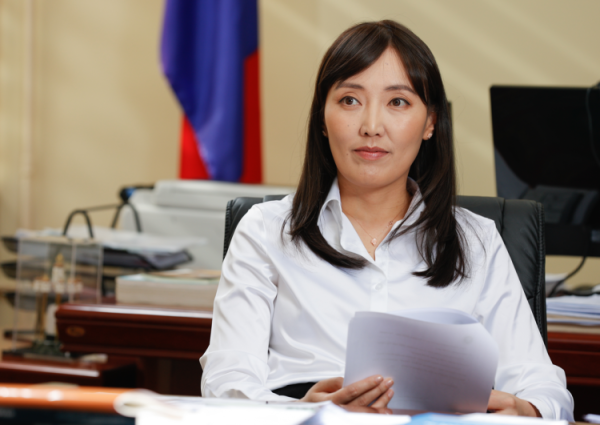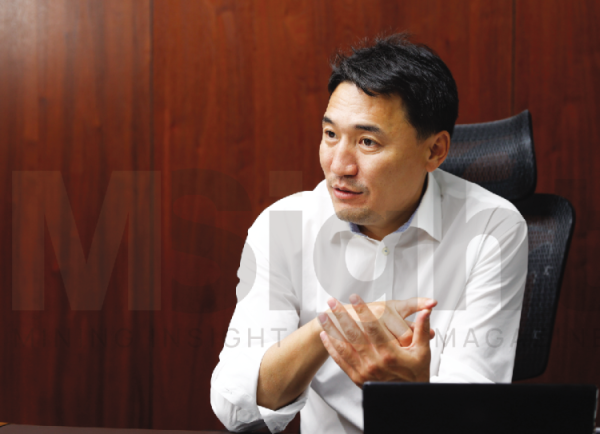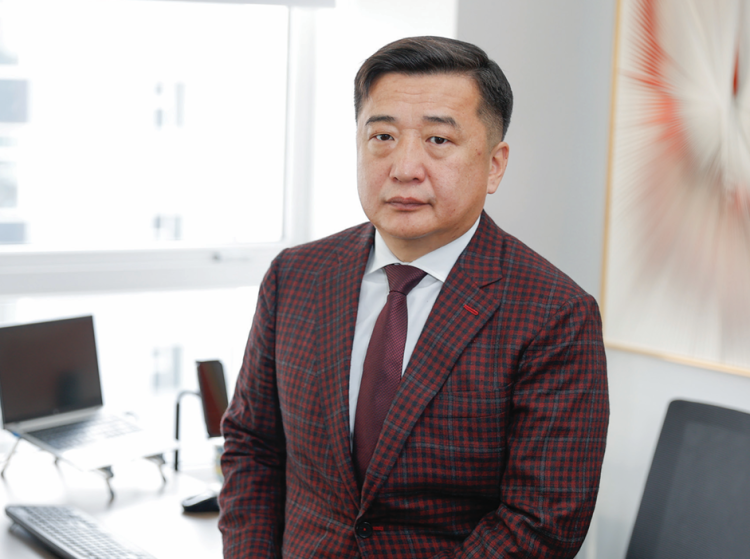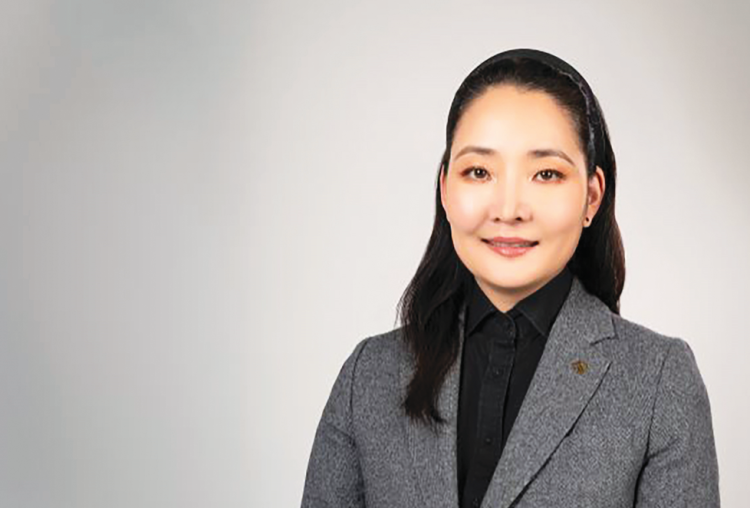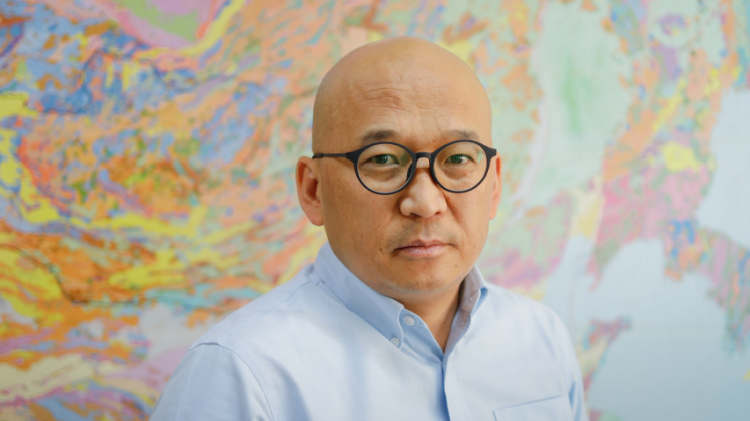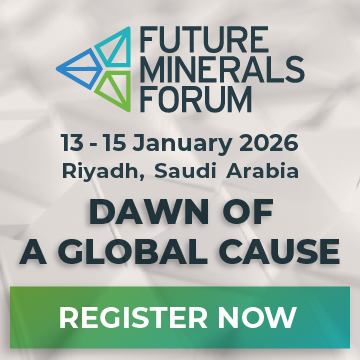 In the time when the uranium market is inclined for a revival due to the “green” energy transition across the world, a new type of the mineral production is about to begin in Mongolia. The Mongolian Government and Badrakh Energy are entering into discussions to establish an investment agreement for the Zuuvch Ovoo uranium project, where the exploration was carried out for 25 years and is now shifting into the mining stage. Journalist Odjargal.E spoke with the executive director Marc Meleard of Badrakh Energy that is invested by French state-owned Orano Group (former Areva).
In the time when the uranium market is inclined for a revival due to the “green” energy transition across the world, a new type of the mineral production is about to begin in Mongolia. The Mongolian Government and Badrakh Energy are entering into discussions to establish an investment agreement for the Zuuvch Ovoo uranium project, where the exploration was carried out for 25 years and is now shifting into the mining stage. Journalist Odjargal.E spoke with the executive director Marc Meleard of Badrakh Energy that is invested by French state-owned Orano Group (former Areva).Please introduce yourself to the readers. I noticed when reading your biography that you have worked especially on projects where uranium production had already started in quite a few countries.
I am a metallurgical engineer by profession. I am 57 years old, a citizen of France. I have worked at Orano Group since 2009. I worked in different uranium mines in operation, underground and ISR technologies in Nigeria and Kazakhstan. Before being appointed to Mongolia, I worked as the manager of the Technical Direction in Orano Mining Head Office. This direction ensures the technical support of all mining projects and subsidiaries in Mongolia, Canada, Nigeria, Kazakhstan and Uzbekistan. I arrived in July of 2021 after being appointed to manage the Zuuvch Ovoo project.
How interesting is the Zuuvch Ovoo project for you?
That was the thing that attracted my interest to work in Mongolia. Managing a completely new project which will start the production for the first time is a great responsibility for me. I consider it a matter of honor to start and write the history of a project, starting from a “blank page”.
What was the Group’s reason for appointing you? How long will you work in Mongolia?
The Group believed that I was the most appropriate specialist experience-wise. According to the duties entrusted to me, I will manage the development and transition to mining of the Zuuvch Ovoo project. I would like, therefore, to work on the project until it reaches the production stage.
How many and what licenses does Badrakh Energy currently hold?
Badrakh Energy is operating with three mining licenses. The sites are Zuuvch Ovoo, Dulaan Uul and Umnut. Because they border with each other, they can be one united site. The exploration works done by Cogegobi lead to a successful discovery of Dulaan Uul and Zuuvch Ovoo uranium deposits.
Does Cogegobi currently engage in activities?
Cogegobi has been created to perform the exploration. We are not currently carrying out the exploration.
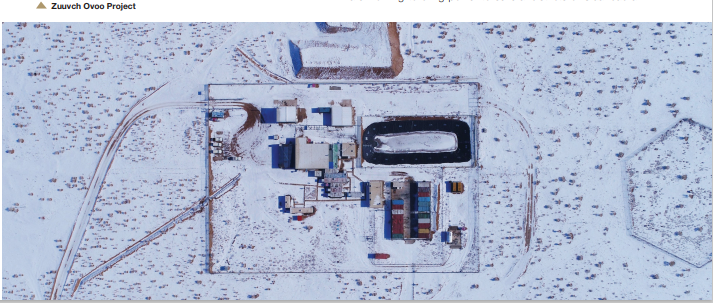
The Mongolian Government is maintaining the policy of attracting the foreign direct investment (FDI). In this regard, it strives to activate the geological exploration sector and increase the exploration licenses. Is Cogegobi interested in this time to begin and invest into new explorations in Mongolia?
Orano Group has been exploring in Mongolia throughout the last 25 years. The exploration means an activity requiring a lot of investments. Now we are concentrating on bringing the deposits we discovered into production. Our group began its projects in Mongolia and Kazakhstan at the same time, in around 1997. The Kazakhstani project has been mining since 2006. Even if you can not completely compare the two projects due to the different “start-up” conditions Kazakhstan already possesses a well-developed uranium industry, the Zuuvch Ovoo project is taking more time than average to go to the industrial stage (the deposit resources have been registered in 2013 and 2020 respectively) . With this project, we need not only prove the technical feasibility deploying the ISR technology, which has not been used in Mongolia before, but also work on the acceptance of uranium mining and gain trust from local communities.
Executive director of Orano Mining noted the importance of the Zuuvch Ovoo project during his visit to Mongolia. How much importance does the French state and government assign to the project that is being carried out and implemented in Mongolia by Badrakh Energy?
Orano Mining is pursuing a diversification policy for its production portfolio. Zuuvch Ovoo is one of the ten largest deposits in the world by its uranium reserves, and is an important part of Orano’s portfolio of projects. Considering the balance of supply and demand of uranium in the world, the supply may become scarce by the year 2030, while the demand for uranium can go up 30% by 2040. Our plans are start mining operations at the Zuuvch Ovoo deposit when the demand will rise on the market. If we are unable to start mining at that time, it is possible that another competitive production will appear on the market. Thus, if Badrakh Energy was able to enter into an investment agreement (IA) with the Mongolian Government before the end of 2023, it will require approximately three more years after that to build the infrastructure and facilities of the Zuuvch Ovoo project, hire the employees and train them. If we calculate this, we will be able to shift to the industrial mining stage in 2027-2028.
How will IA stipulate the tax stability? How will the parties negotiate the share ownership and investment?
This question is difficult to answer. The answer to this question depends on how the Mongolian state and the operator company will make their investment agreement. Of course, both parties participating in the project prioritize a stable taxation environment for 30 years of mining and processing in the Zuuvch Ovoo project. The primary objective of this agreement is to ensure the activity of the operator company in the stable tax environment even if the head of the state and government changes. This will mean the sustainability of company’s operations.
When will the IA negotiations with the Mongolian Government begin?
The negotiations over IA is scheduled to begin in June 2022. Badrakh Energy and Mon-Atom have agreed on a roadmap dedicated to the Investment agreement process. This is the plan from June to the end of the next year. Regarding the works in the roadmap on preparing for the agreement, many actions will be simultaneously done, such as the inclusion of amendments in the feasibility study on the basis of results from the Zuuvch Ovoo pilot test project and also the update of SHA that was signed in 2013. According to Mongolian legislations, the IA should be voted by the parliament and made public.
How do you think the Mongolian side should be prepared?
We want to negotiate with people at the other side of the table who are authorized to make decisions. Otherwise, the IA negotiations will protract. Time is the most important factor for us. Even the Minister of Finance of Mongolia noted during the presentation of the great recovery policy, saying that we should race with the time. If the parties will be unable to conduct the successful negotiations of the Zuuvch Ovoo project IA within 2023. I will not hide my apprehension about the inability to productively move forward the agreement negotiations during the election year. On the other hand, the cheerful period of the world’s uranium market will not wait for the Zuuvch Ovoo production. Besides Mongolia, the uranium projects are already in the development stage in many other countries. When we look at this, the Zuuvch Ovoo project may lose not one year, but 5-6 years and risk a much longer delay. That is why we are stressing the great importance of the time for the project.
Mongolia is preparing to revise the Law on Foreign Investments and the Law on Minerals. It is focusing more on improving the environment for foreign investments. As a manager of the project that has continued for 25 years and is now transitioning to the production stage, can you describe your position on the mining sector of Mongolia and, specifically, on the exploration?
Zuuvch Ovoo is a special project. It will mine the radioactive metal uranium. That is why, our company is generally regulated by the Law on Minerals and the Law on Nuclear Energy. Of course, it would be simpler if we were regulated by one law. In the countries, where I worked, the uranium production was regulated just by the law on minerals. In Mongolia, Badrakh Energy complies besides the two laws with many types of regulations in order to carry out activities. All of them require obtaining the licenses and compiling the documents for them. Permits are required at every stage – the government, state central institutions and provinces and soums in the region. I think that is one of the reasons our company has spent 25 years in Mongolia in order to come to this point.
How much uranium has the Zuuvch Ovoo production pilot project mine?
Because uranium is mined for the first time in Mongolia, the representatives of the state and government, specialists and public organizations have a lot to see. The traffic of visitors seems to be high. The Zuuvch Ovoo production pilot currently retrieved 4.5 tonnes and the Umnut technological test retrieved 2.5 tonnes of uranium. We have mined and treated 7 tonnes of natural uranium in total. In terms of the equipment-technics and technology, it is going normally without any issues. Our production pilot employees working at the mine were prepared very well. They are skilled specialists who are committed in their work. Since the beginning of the production pilot many foreign and domestic delegates have been coming to view the activities of our mine. Over the last 3 years we received around 300 visitors on site – students, representatives of local communities, government authorities, journalists. We are implementing a transparent approach to our activities. This is part of our culture in May 2022, we received the IAEA experts. These specialists worked in Mongolia with the request and invitation of the Nuclear Energy Commission. To be honest, they viewed all activities of our project such as the daily production, radiation protection, labor safety, environment, water monitoring and communication with local citizens. They praised the company and employees and congratulated us. This was a big encouragement for our company. I want to say that you should necessarily go and see the project site in order to gain the proper knowledge about our production. One should personally go and actually see. International experts evaluated whether Mongolia was ready for mining and treating natural uranium and, on the other hand, came to review how properly the operator company was prepared for mining.
Is the final manufactured product yellow cake or next stage processing black powder?
The uranium oxide is the standard product sold on the world’s uranium market. It is the yellow cake that we know well. Now yellow cake is calcinated in a high temperature to obtain the black colored powder that is a more concentrated product (up to 85%). Orano Group’s KATKO project in Kazakhstan used to produce yellow cake in the first ten years. This is a commercial aspect. There were no issues in selling yellow cake.
No issues mean?
The purchasing customer needs to calcinate and process the yellow cake to make it to the next stage to turn it into nuclear fuel. Yellow cake contains some impurities. The calcination process is for reducing this impurity. Selling just as yellow cake requires paying a certain penalty amount. You could understand that the customer expends this payment to calcinate the moisture from yellow cake.
To what market will you export?
The Mongolian state owns 34 percent of Badrakh Energy and French Orano Group 66 percent. The provisions of IA may stipulate that the parties will sell the product allotted according to their shares. I cannot now say specifically. The agreement may also indicate the matter of which market it should be exported to. But I want to highlight that the Zuuvch Ovoo deposit uranium to be mined by Badrakh Energy will be used for peaceful purposes. It means using as a raw material for producing low carbon electricity at nuclear power stations As you all know, the price of transport logistics has become high in recent years. Therefore, any company would be interested in supplying to a nearby market with less logistical cost. The nearest possible market would be China. Thus, it could be one of possible markets. KATKO exports almost all of its product to China.
Not just in Mongolia, but in other countries the uranium projects also face a lot of opposition from the society and local citizens. Will Badrakh Energy pursue a new strategy of local relations in connection with the mining production?
Our primary objective is to have a good relationship with the local administration and citizens, which means to build a mutual trust. Establishing and developing the good relationship is a daily work. The company maintains the policy of ongoing dialogue and consultations, we deploy particular efforts to explain our ISR technology, not yet known in Mongolia, the impact of our activities on the environment and what we do to minimize this impact. We actively involve local communities into environmental monitoring, letting them take part in it together with our specialists. As I observed, the relationship between the company and the local administration and citizens improved in the last two years. That was the dedication of not just the company. The local administration and citizens try to understand. Both sides see that our positions are coming closer to a similar level.
Were there significant difficulties on the provincial and soum levels?
Yes. Thanks to willingness of the both parties, we reached an agreement related to the land fee issue. Now we do not have any problem of the land use fee in the region. As part of our CSR policy we have established special governance for our community relations. Our company established the cooperation councils in 2013 in Ulaanbadrakh soum and Zuunbayan bagh. This council convenes every quarter and local citizens openly participate in it. The discussions of citizens at the council show that the cooperation is improving. Such system of dialogue and consultation should continue throughout the life of mine. We are implementing many project and programs as a part of the cooperation agreement in the region. MNT 5.6 billion (USD 1.9 million) spent by Badrakh Energy between 2006 and 2020 on social development projects for Health, Education, Animal Health in the Dornogovi province. There will be projects and programs worth more than MNT 800 million in 2022-2023. This year, we are working to bring power to several districts of Ulaanbadrakh soum, which were not connected to the electrical supply. The work to improve the electricity availability is considered a significant work. On the education side, Badrakh energy is proud of its student scholarship program: more than seventy students from local communities were enrolled in the student scholarship program of the company since 2010. The company takes on the full tuition for the whole period of gaining the higher education, not just one year. These students come back to province as doctors, teachers, veterinarians. Animal Health is our important social investment area. About 120 herder households have enrolled in the livestock reconstitution project that is being implemented since 2007. Through this exemplary work the company and the region are actively developing their relations. One the smaller scale, Badrakh Energy is purchasing from the soum herders meat for food at the field camp.
Will the current state of world geopolitics, green economy transition and the energy crisis affect the use of the nuclear energy?
As a specialist who has accumulated many years of experience in the uranium industry, how do you imagine the trends and perspectives of the world’s nuclear energy sector?
The entire world is choosing a clean energy that does not emit carbon gas and is less environmentally impactful. These are renewable and also nuclear energies. The solar and wind energy dominate as sources of the renewable energy. But they are not considered a reliable energy production. The solutions and technology have not appeared yet. But the nuclear energy is unique because it can be managed when needed. Some countries that announced the rejection of the nuclear energy are revising this decision today. To be honest, only the nuclear energy is a reliable source of energy production and cheap production. It is obtained only from uranium. The entire world came to recognize that the green energy is a combination of renewable and nuclear energies.
What do you think about the possibility where Mongolia could eliminate its energy dependency by building an atomic power station?
In order to be independent from oil exporter countries in terms of the energy, France produced large nuclear energy programs in 1950’s. The president of that time personally led them. As a policy of the energy independence, France intensified the uranium exploration, opened many uranium mines and was on the path of fully supplying the nation’s demand by nuclear energy. Whether Mongolia should establish an atomic power station or not depends on the strategic domestic decision of the country. As I see, small-sized small nuclear energy reactors (small modular reactor – SMR) are developing in recent years. Such reactor type may suit for Mongolia. You can build a small-sized nuclear reactor similar to the small power station that produces the energy for Ulaanbaatar in order to supply the demand in the central region. I want to say again that this is a decision of Mongolia itself. What is for sure that with the nuclear energy’s revival in Europe and across the world, Mongolia, with its registered resources of uranium, including 100,000 tonnes discovered by Orano Mining geologists has an opportunity today to become a permanent participant in the global energy sector, important contributor to the global climate effort within the international community.
Zuuvch Ovoo is a completely new type of the mineral production and also a large project in the Mongolian mining sector. How much do you believe in the policy of the Mongolian Government to run this project on a stable and committed basis? Are you ready for the social and local opposition, misunderstanding and other difficulties that may occur in the future?
We face challenges when explaining that our activity is just a mining activity and explaining that mining uranium is very similar to other mining operations. What we produce is a natural product, uranium is not transformed, it is just concentrated as any other mineral which are mined as copper for instance. It is possible to block with a common office paper the natural radiation emitted from this concentrate. Just a mine than can be found in other countries. All these things of explaining and giving the information to the public are not a work of one day. Much time has to be spent and perhaps one thing has to be repeated many times. That is why we continuously spread the information about the project and have been organizing trips to show the site and activities, as it is said: “it is better to see once that hear thousand times”. People who come to the site of in-situ leaching ask where our mine is. There are absolutely no dust, holes or open pit. Moreover, it is fully possible to have the livestock graze on the site where uranium is leached and mined. We have been operating in Mongolia for 25 years. This time is showing very clearly perhaps our belief that we will successfully implement this project. This project can be described as a project of quality. It is beneficial for all stakeholders. We believe that Mongolia, where the project is carried out, will reap the most important benefit. Thank you for the interview.
Mining Insight Magazine, May 2022



